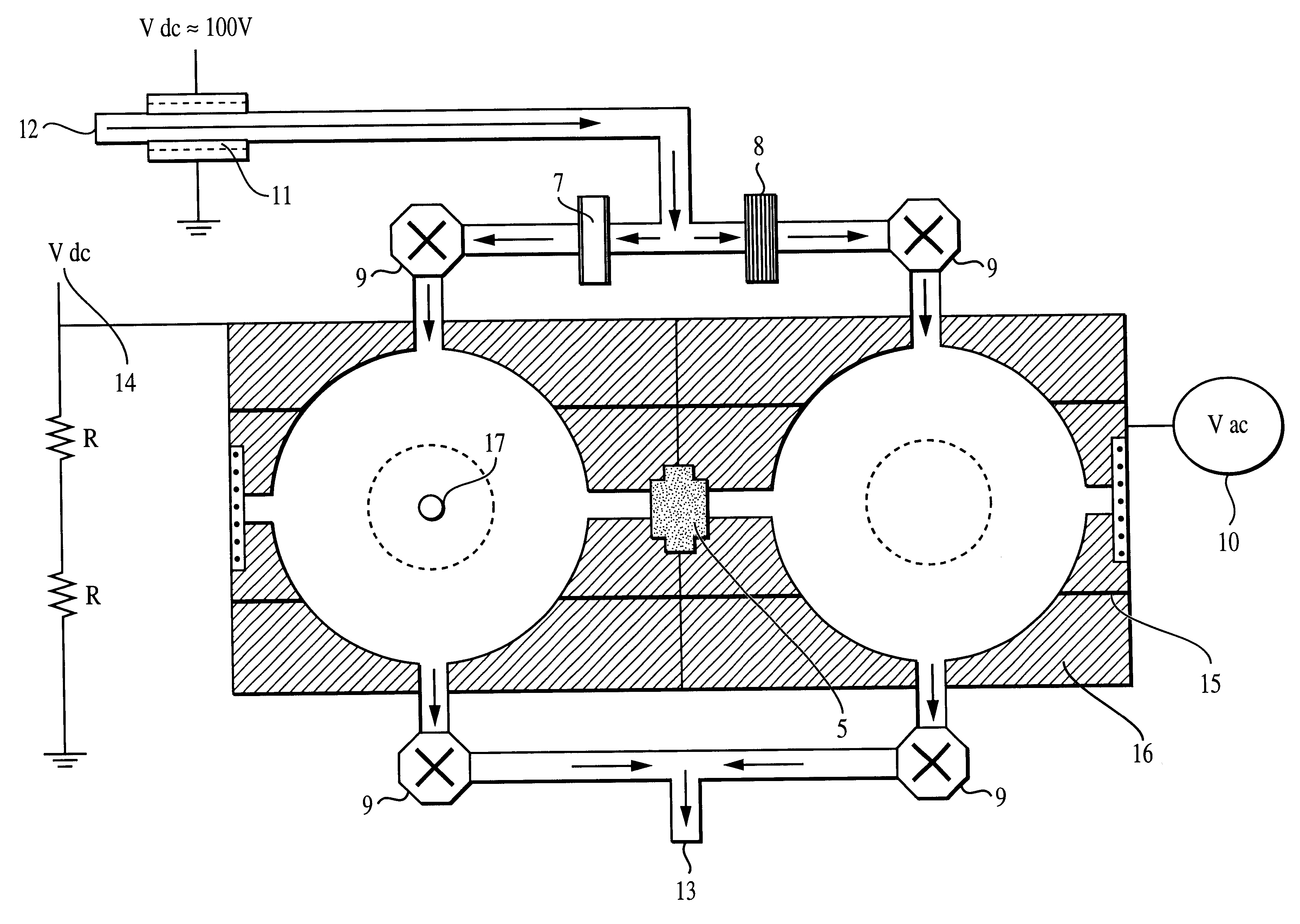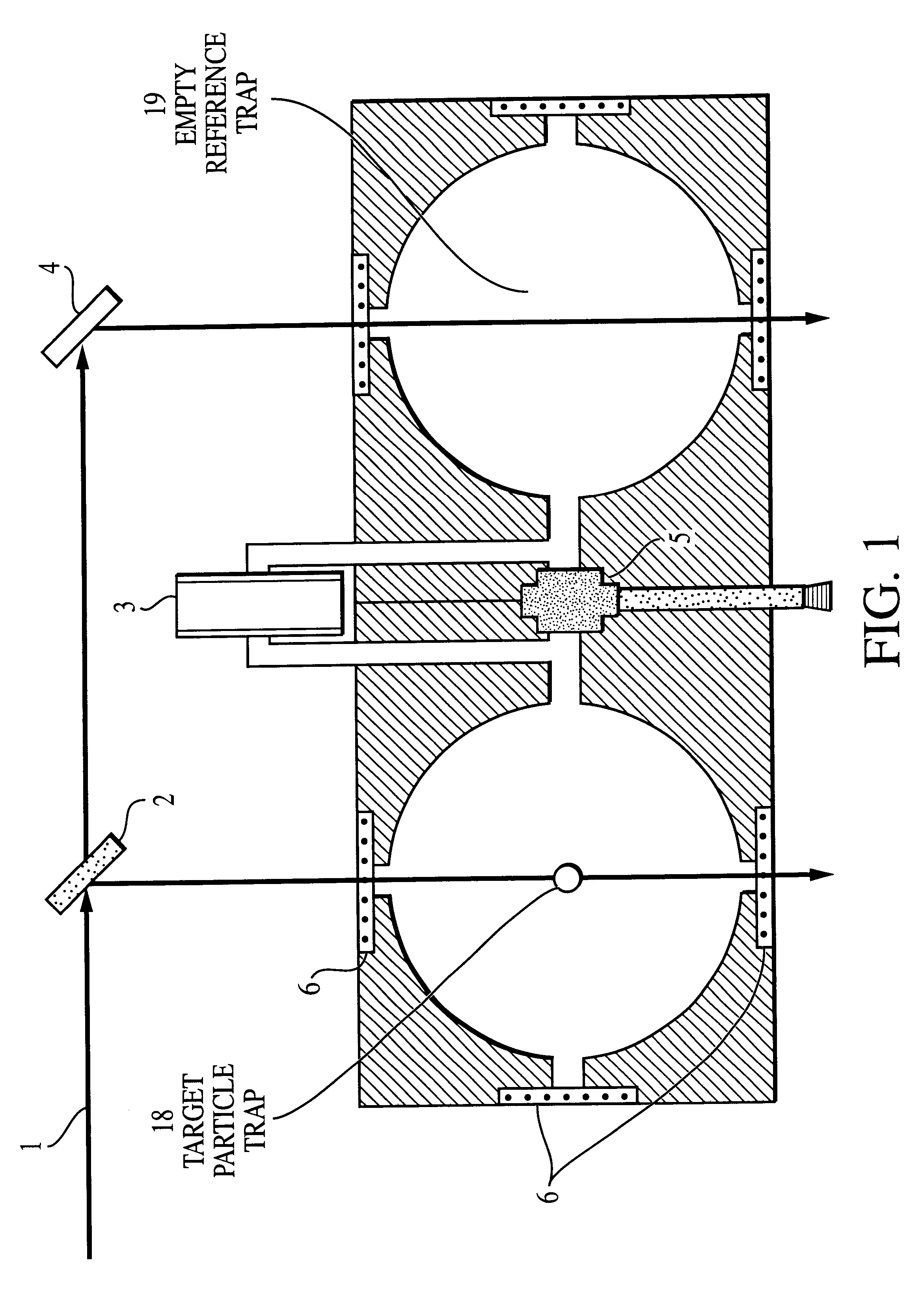Single particle caloric absorption spectrometer
a single particle, caloric absorption technology, applied in the field of single particle absorption spectrometer, can solve the problems of inability to discriminate and/or identify species, lack of detailed information for certain aerosols, and inability to compare good experimental data
- Summary
- Abstract
- Description
- Claims
- Application Information
AI Technical Summary
Benefits of technology
Problems solved by technology
Method used
Image
Examples
Embodiment Construction
As can be seen in FIGS. 1 and 2, an ensemble of individual particles are gently drawn into the aerosol input 12 through a region of high electric potential 11, thus inducing a charge on the particles. A potential of about 100 volts DC should be sufficient to induce a net charge on the particle(s). When the four pneumatic valves 9 are open, the charged aerosol flow is evenly split allowing one half of the flow to be drawn through an empty particulate filter holder 7 and into the target trap, while the other particulate volume is filtered at holder 8 which allows only ambient air to pass to the reference trap. Although a spherical void trap geometry is used here, a variety of electrodynamic trap geometries suitable for use in the present invention might also suffice, e.g., hyperbolic, ring, parallel plate, etc., and would be familiar to those of ordinary skill in the art (9,10).
A good discussion of the basic operation of particle traps is found in the book Optical Effects Associated W...
PUM
| Property | Measurement | Unit |
|---|---|---|
| AC voltage | aaaaa | aaaaa |
| pressure | aaaaa | aaaaa |
| temperature | aaaaa | aaaaa |
Abstract
Description
Claims
Application Information
 Login to View More
Login to View More - R&D
- Intellectual Property
- Life Sciences
- Materials
- Tech Scout
- Unparalleled Data Quality
- Higher Quality Content
- 60% Fewer Hallucinations
Browse by: Latest US Patents, China's latest patents, Technical Efficacy Thesaurus, Application Domain, Technology Topic, Popular Technical Reports.
© 2025 PatSnap. All rights reserved.Legal|Privacy policy|Modern Slavery Act Transparency Statement|Sitemap|About US| Contact US: help@patsnap.com



